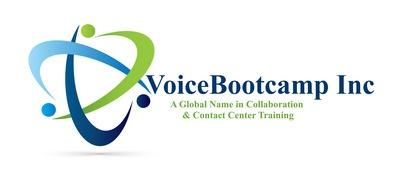Tel: 1-866-777-0060 | Request For Information
Advanced Cisco Meeting Server Training
In this course, you will learn advanced techniques in installing, troubleshooting, and maintaining a single server and single server split deployment of Cisco Meeting Servers.
The recently purchased Acano collaboration hardware and software include video and audio-bridging technology that allows customers to connect video systems from multiple vendors across both cloud and hybrid environments. Cisco has incorporated Acano collaboration technologies into the new Meeting Server tool.
What is included
- 5 Days Instructor-led Training
- Free Retake - Up to 2 Years
- Attend Online or Onsite
- Full Access to Study Kits
- Email Support from Instructor
Upcoming Schedule
Upcoming Schedule
If you do not see any schedules, please contact us at
There are no events in the selected category
Course outline
1. Reviewing Cisco Meeting Server Intermediate
- Component parts of a Cisco Meeting Solution
- Configuration steps for a Cisco Meeting Solution
2. APIs
- Purpose of APIs
- Benefits of APIs
- Types of APIs
- Function of the GET, POST, PUT, and DELETE commands
3. Configuring Software with an API
- How a user can interact with software using an API
- Download and install Chrome Postman
- Other API software
- Download the Cisco Meeting Server API guide
4. Configuring Spaces with the Cisco Meeting Server API
- Cisco Meeting Server API structure
- Use Chrome Postman for information on calls and spaces with the GET command
- Use Chrome Postman to post a new call space with the POST command
- Use Chrome Postman to place changes in a space, including adding a member, with the PUT command
- Use Chrome Postman to delete a space with the DELETE command
5. Customization Configuration
- Create and modify a user profile and assign users
Create and modify a dual-tone multifrequency (DTMF) profile and apply to a user profile
Modify the interactive voice response (IVR), color scheme, and background
6. Planning a Resilient and Scalable Cisco Meeting Server Deployment
- Resilient server solutions
- Scalable server solutions
- Geographically dispersed configurations and GeoDNS
- Domain Name System (DNS) records required for a resilient and scalable solution
- Certificate requirements for a resilient and scalable solution
7. Configuring a Database Cluster
- Relationship between cluster master and cluster slaves in a database cluster
- Certificate requirements for a secure database cluster
- Configure the certificates for a database cluster
- Configure a database cluster
8. Configuring a Call Bridge Cluster
- Relationship between the Call Bridge and the Database
- How cross-cluster spaces behave
- Configure certificates for Call Bridge clustering
- Storage of configuration when entering with the API and the individual web interfaces for Lightweight Directory Access Protocol (LDAP) and Call Bridge clustering
- Configure a Call Bridge Cluster
- Connect XMPP server to multiple Call Bridges
9. Configuring Load Balancers and Trunks
- Relationship between the XMPP server, Trunk and Load Balancer
- Configure certificates for multiple trunks and load balancers
- Configure multiple Trunks to multiple Load Balancers
10. Configuring Multiple Web Bridges
- Relationship between multiple Web Bridges and Call Bridges
- Internal and external DNS records support for both internal and external Web Bridges
- Configure certificates for multiple Web Bridges
- Configure multiple Web bridges
- Connect multiple Call Bridges to multiple Web Bridges
11. Configuring Multiple TURN Servers
- Relationship between multiple TURN servers and multiple Call Bridges
- Configure certificates for multiple TURN servers
- Configure multiple TURN servers
- Connect multiple Call Bridges to multiple TURN servers
12. Configuring Multiple Recorders
- Features of the recording capability
- Software, hardware, and licensing requirements for recording
- DNS records
- Configure the Recorder
- Relationship between multiple Recorders and multiple Call Bridges
- Configure a Call Bridge to use a Recorder
- Configure certificates for multiple Recorders servers
- Configure multiple Recorder servers
- Connect multiple Call Bridges to multiple Recorder servers
13. Integrating with a Resilient and Scalable Cisco Meeting Server Deployment
- Integration with Cisco TelePresence Video Communication Server (VCS) or Cisco Unified Communications Manager and multiple Call Bridges
- Integration with Cisco Expressway technology and multiple Call Bridges
- Integration with Microsoft Skype for Business and multiple Call Bridges
- Integration with Cisco TelePresence Management Suite and multiple Call Bridges
14. Deploying an H.323 Gateway
- Cisco preferred architecture for H.323 and Session Initiation Protocol (SIP) interoperability
- Functionality of the Cisco Meeting Server H.323 gateway
- Configuration the Cisco Meeting Server H.323 gateway
15. Multitenancy Options
- Purpose of the multitenancy capabilities
- Options for multitenancy capabilities on the Cisco Meeting Server
16. Customization Options
- Options available to customize Cisco Meeting Apps
- License keys required for customization
- Web Server requirements for customization
- Options available to customize recorded messaging
- Customization options available for invitation text
Lab Outline
- Lab 1: Single-Server Deployment
- Lab 2: API Introduction
- Lab 3: Customization
- Lab 4: Database Cluster Configuration
- Lab 5: Call Bridge Cluster Configuration
- Lab 6: Multiple-Trunk and Load-Balancer Configuration
- Lab 7: Multiple Web Bridge Configuration
- Lab 8: Multiple TURN Server Configuration
- Lab 9: Multiple Recorder Configuration
- Lab10: Integrating with VCS and Microsoft Skype for Business in a Multiple Call Bridge Installation

